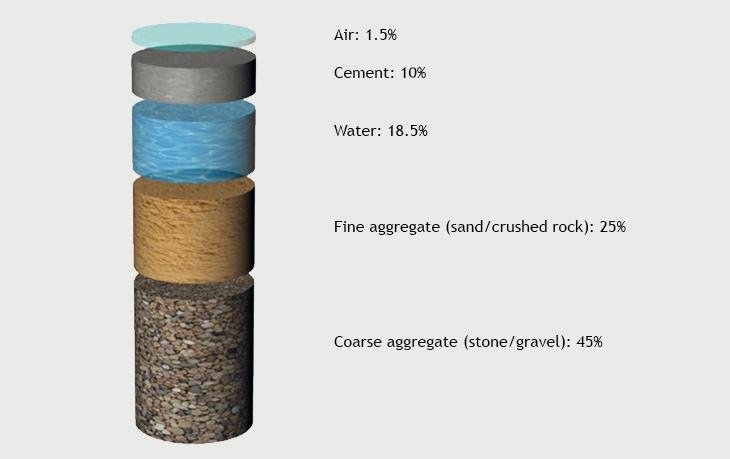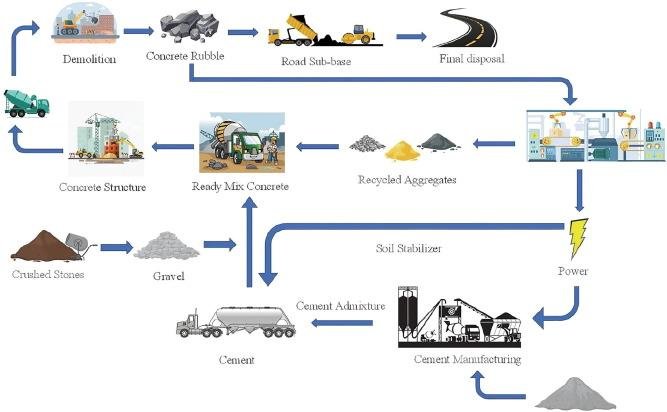Eco-friendly specialty concrete is revolutionizing the construction industry, driving innovation and sustainability efforts across the sector. As the world grapples with climate change and environmental concerns, the concrete industry has stepped up to the plate, developing innovative solutions that reduce carbon emissions and promote a more sustainable future.
One of the most exciting developments in this field is the creation of “green concrete.” This environmentally friendly option to traditional concrete incorporates recycled materials and industrial byproducts, considerably reducing the carbon footprint associated with cement production. By utilizing materials such as fly ash, slag, and recycled aggregates, green concrete not only addresses waste management issues but also conserves natural resources.
The benefits of eco-friendly concrete extend beyond environmental considerations.Many of these innovative mixes offer improved durability and strength compared to traditional concrete. As a notable example, the addition of supplementary cementitious materials (SCMs) like fly ash can enhance the concrete’s resistance to sulfate attack and reduce permeability, leading to longer-lasting structures that require less maintenance over time.
Another groundbreaking development in the field of sustainable concrete is the concept of “living concrete.” This innovative material incorporates naturally occurring bacteria that, when combined with a special solution, can colonize small pieces of rock and produce a cement-like substance.The process occurs at room temperature, significantly reducing energy consumption and associated carbon emissions. What’s more, this living concrete reaches its optimal strength in just 72 hours, compared to the 28 days required for conventional concrete to achieve full strength.
Self-healing concrete is another exciting innovation that’s extending the lifespan of concrete structures. This technology involves adding bacteria encapsulated in clay balls to fresh concrete. When cracks appear in the hardened concrete, the balls burst, releasing the bacteria, which then produce limestone to seal the cracks. This self-repairing ability not only increases the durability of concrete structures but also reduces maintenance costs and the need for repairs, further contributing to sustainability efforts.
The construction industry is also exploring the use of alternative raw materials to address the growing concern over sand scarcity. Innovative processes are being developed to utilize desert sand, which was previously considered unsuitable for construction purposes, in concrete production. This breakthrough could help alleviate the environmental and political issues associated with sand mining while providing a new source of raw materials for the industry.
Precast concrete is another area where sustainability is making significant strides. The controlled factory environment in which precast concrete is produced allows for more precise material allocation,reducing waste and preventing overproduction. Additionally, the transportation of precast elements to construction sites, rather than raw materials, further reduces the carbon footprint associated with concrete construction.
The push for sustainability in the concrete industry has also led to the development of carbon-neutral and even carbon-negative concrete. These advanced formulations not only reduce emissions during production but can also actively absorb CO2 from the atmosphere over their lifetime, turning concrete structures into carbon sinks.
As the construction industry continues to evolve, the role of eco-friendly specialty concrete in shaping a more sustainable future cannot be overstated. From reducing carbon emissions and conserving natural resources to improving durability and performance, these innovative concrete solutions are paving the way for greener, more resilient infrastructure.
The adoption of these sustainable practices is not just a trend but a necessity in the face of growing environmental challenges. As more construction projects prioritize sustainability, the demand for eco-friendly specialty concrete is expected to rise, driving further innovation in the field. This shift towards more sustainable building materials is not only benefiting the environment but also opening up new opportunities for growth and development within the construction industry.
eco-friendly specialty concrete is at the forefront of construction industry innovation,offering solutions that address environmental concerns while improving the performance and longevity of our built environment. As research and development in this field continue to advance, we can expect to see even more groundbreaking solutions that will shape the future of sustainable construction.







